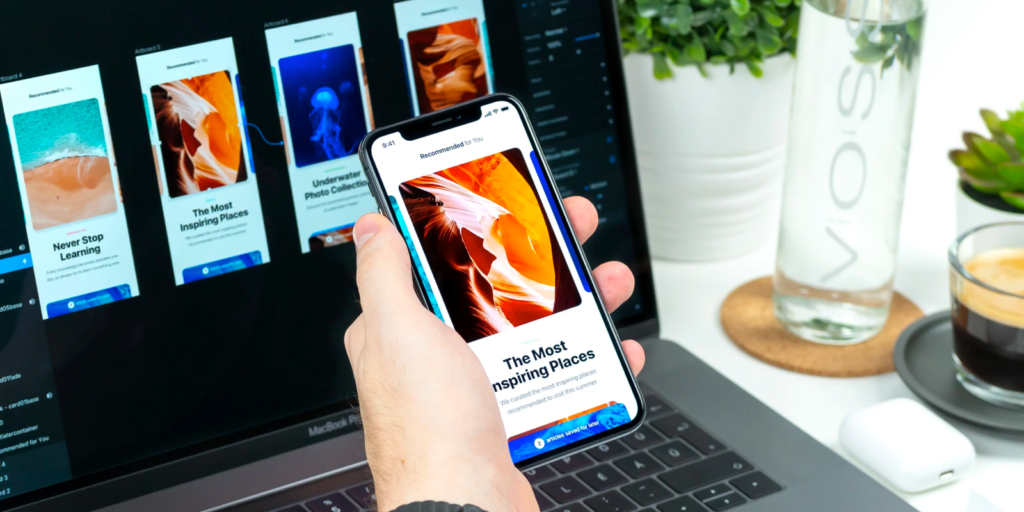Today’s software market is more competitive than ever before, with more than three million smartphone apps alone.
To stand out, not only do applications have to be useful and work well, they have to provide an experience consumers will enjoy.
Many developers use User Experience (UX) and User Interface (UI) almost interchangeably when talking about this. It’s very important, however, to remember that they are distinct concepts.
Find out more about UX vs. UI by reading the guide below.
User Interface
UI is the nuts and bolts of a front-end application. It’s the buttons, screens, pages, and visual/auditory elements that allow users to interact with your application.
The earliest versions of modern UI have their roots in the graphical user interfaces (GUI) of the early 1980s. These allowed laymen to use a computer without any knowledge of coding or access to the command line. This was a huge advancement both in the widespread adoption of computing and in the creation of a new field of software development.
Today’s UI developers work in a much more competitive and demanding field than those early pioneers. A successful UI needs to be intuitive, visually appealing, and, of course, functionally flawless.
UI Design and Planning
UI designers have a daunting task ahead of them. They have to envision all the probable use cases for their application and design attractive functionality around them.
For most designers, this means looking at current industry trends and applying them to the actual functions of your program. Your design has to be clean and visually stunning. It needs to have cross-platform functionality without sacrificing appearance.
It’s the 21st century: any application you create should be fully mobile-compatible. Mobile development has UI imperatives that are far stricter than those of desktop applications.
Any application also needs to be fully accessible to all possible users. This means that you have to balance color gradients, typography, the presence of lighting cues, and other major factors. If you design a UI that isn’t functional for a certain segment of the population, there will be a backlash.
Gone are the days when simply creating a useful program was enough. Now, it has to be both useful and visually appealing.
User Experience
UX refers to the entire experience of a user’s time on your application. It includes navigation and interaction with information. It also encompasses things like emotional reactions and the ‘feeling’ a site gives them.
UX doesn’t only apply to software development. Any consumer-facing company has to worry about the reaction a user will have to their product. Creating an excellent user experience isn’t only related to the quality and appearance of an application.
UX begins well before a potential user ever interacts with your application. It includes everything from the quality of your advertising to things a user might have heard about your environmental and labor practices.
At its core, UX is the attempt to shape the way a user will interpret every aspect of their experience with your brand.
UX Design and Planning
Designing for UX is much more difficult than building a quality UI. A UX designer is focused on the potential uses for an application and ways to increase consumer value.
They’ll start by studying what consumers are looking for in an app or site. Often they’ll look at industry-leading competitors and older versions of apps. Honest customer reviews are a goldmine for a UX designer.
Knowing what your user base liked and disliked about a similar product allows a designer to identify valuable features. For example, if you provide a shopping list app, you may discover that users loved the ability to create repetitive weekly lists but wanted a way to share them with their families.
A UX designer will take feedback like this and prototype your application to find the perfect blend of what a consumer is looking for. This generally involves wireframing different functions to see how they work in real-world settings.
They will also look at your existing brand and conform your application to it. It’s not a great idea to alienate a major portion of your potential audience with a poorly thought-out reference or post.
UX vs. UI
So we know what UX and UI are; now, we need to know how they compare to one another. Though closely aligned, they both have their place in the development realm.
UX can be seen as the “what” and “how” of an application. It focuses on the kind of functions an app will have. It also looks at how they should be presented to a user.
Once you know the core features of your app, you’re ready to bring UI into the mix. UI becomes the face of your application. You’ve got the vision of what your app should do; UI is the actual process of making it work.
Why Both Are Crucial
It’s impossible to build a great application without both UX and UI planning. One without the other is guaranteed to fail.
If you don’t have effective UX, then you won’t know what your users are looking for. UX allows you to identify the value you need to provide. It’s the behind-the-scenes work that lets you create a product that will resonate with your user base.
Once you know what you’re bringing to your consumers, UI can step in. You’ve got the mechanics of your application from UX. Now you need to make it appealing. UI takes a functional but uninspired product and turns it into something beautiful.
It’s the difference between a basic website and a fully optimized and user-tested one. One is boring but workable; the other is a joy to work with and a treat for the eye.
They both provide the same information and functionality, but which one would you prefer to use?
Always Focus on the User
In the debate of UX vs. UI, it all comes down to the user. UX design complements UI design. One without the other doesn’t allow you to create a fully realized application.
Find out more about the behind-the-scenes steps in developing a high-quality custom application here.



